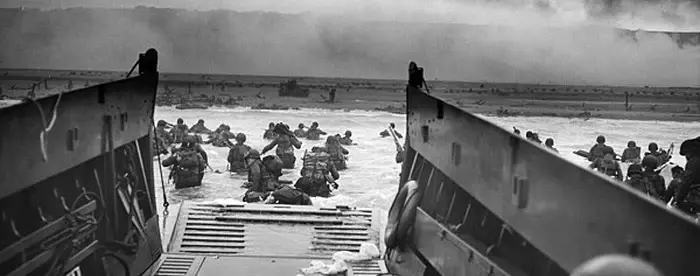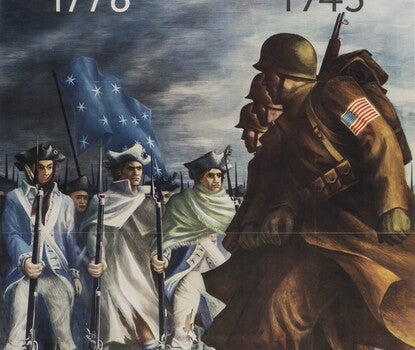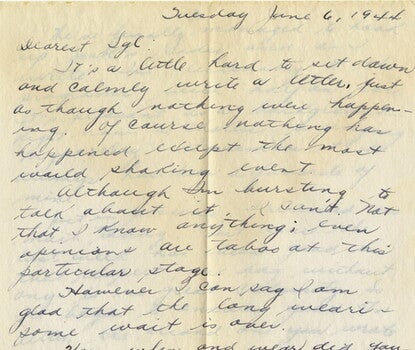So many things could have gone wrong with the invasion of Normandy, but D-Day (June 6, 1944) proved to be the beginning of the end of the war in Europe, as Germany faced a full-scale assault on two fronts by the American, British, and Canadian military.
Image: Robert L. Sargent, Into the Jaws of Death, June 6, 1944. (National Archives, 513173)



